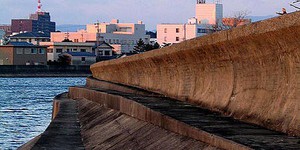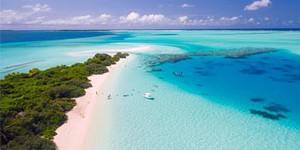Others Like “Coastal and Marine Geology” (top 20 results)
|
What causes landslides? The USGS Landslide Hazards Program conducts research needed to answer major questions related to landslide hazards. Where and when will landslides occur? How big will the landslides be? How fast and how far will they move? What areas will the landslides affect or damage? How frequently do landslides occur in a given locality? Investigate the patterns of landslide occurrence in your area. Are they related to locations, geology, or topography? Are they more frequent…
Read more
How is geology important for our energy resources? Coal, oil, and natural gas are formed by geological processes over millions of years. Certain geological formations can indicate a reservoir of coal, oil, or natural gas. Also, geothermal processes can be used as an energy resource. How are these formations identified? How are the resources extracted? You can use the National Geospatial Program to access, view, and download information from geospatial databases containing a broad spectrum…
Read more
The same principles of geology that we use to investigate the Earth can also be applied to other planets. Visit the Astrogeology Research Program at the USGS to find out how information about the geology of other planets can be gathered (USGS, 2006). Can you make a map or model of another planet? What minerals are found on other planets? Which planets have similar composition to the earth? What kind of geological forces occur on other planets? Do other planets have earthquakes, landslides…
Read more
Minerals are sometimes precious, like diamonds. But most minerals are very common, like sodium, which is found in salt. How are minerals found and identified? How are our mineral resources distributed? Visit the USGS Mineral Resource Program to find mineral resources in your state. How are satellite images used to identify potential mineral sources? You can also find out how minerals are identified using spectroscopy. How are potentially harmful minerals, like mercury, dealt with? Visit the…
Read more
Visit the USGS Earthquake Hazards Program to find out about global patterns of earthquake incidents (USGS, 2006). Can mapping earthquakes help identify fault lines? They also have a list of science fair project ideas. Another great resource for earthquake-oriented science fair projects is by Jeffery Barker (Barker, 1994). Build a model to study the forces of an earthquake using sandpaper-covered blocks. What are the forces involved? How are stress and friction in balance along a fault line?…
Read more
What is geomagnetism, and how does it affect the earth? Visit the USGS Geomagnetism program for more information about this invisible force (USGS, 2006). How is the earth's magnetic field patterned? Are the magnetic poles located at the exact North and South Pole? How can the fields be mapped on the Earth's surface? What is declination? Use the mapping tools to study changes in declination patterns over time. (USGS, 2006)
Read more
Think about mountain ranges, canyons, sand dunes, or any other interesting geological feature you may live near enough to visit. The surface of the Earth is always changing due to a balance of forces both above and below the surface. Below-surface forces cause the Earth's crust to be faulted, folded, tilted, and lifted. Above-surface forces are primarily due to the natural processes of weathering and erosion. Can you show the effects of these forces using scale models, demonstrations,…
Read more
On December 26, 2004, a magnitude 9.2 megathrust earthquake off the west coast of Sumatra, Indonesia unleashed a powerful tsunami that hit the coasts of 14 countries and caused the loss of over 200,000 lives. The devastation that the tsunami left in its wake was heartbreaking, and people across the world united to help the survivors.
Tsunamis are a powerful force of nature that can change the features of a coastline and result in millions of dollars in economic loss, but can…
Read more
When you go to the beach, you may not know if the beach is natural or man-made. The popularity of sandy beaches prompted developers in the past to bring in sand to cover rocky shorelines and turn them into more popular sandy beaches. However, the actions of the tides, currents and waves carried the extra sand out into the reef, endangering the reef and the creatures living on it. You can use a water table to conduct experiments with sand movements and reefs. How is sand moved by water? How…
Read more
The Kepler space telescope is a retired space telescope launched by NASA to discover Earth-size planets orbiting other stars. Named after astronomer Johannes Kepler, the spacecraft was launched on March 7, 2009, into an Earth-trailing heliocentric orbit. The principal investigator was William J. Borucki. After nine years of operation, the telescope's reaction control system fuel was depleted, and NASA announced its retirement on October 30, 2018.
Designed to survey a portion of Earth's region…
Read more
|
Explore Our Science Videos
Lift Ice with Yarn STEM activity
Why Do Apples and Bananas Turn Brown? - STEM activity
Explore Concave and Convex Mirrors– STEM Activity.








